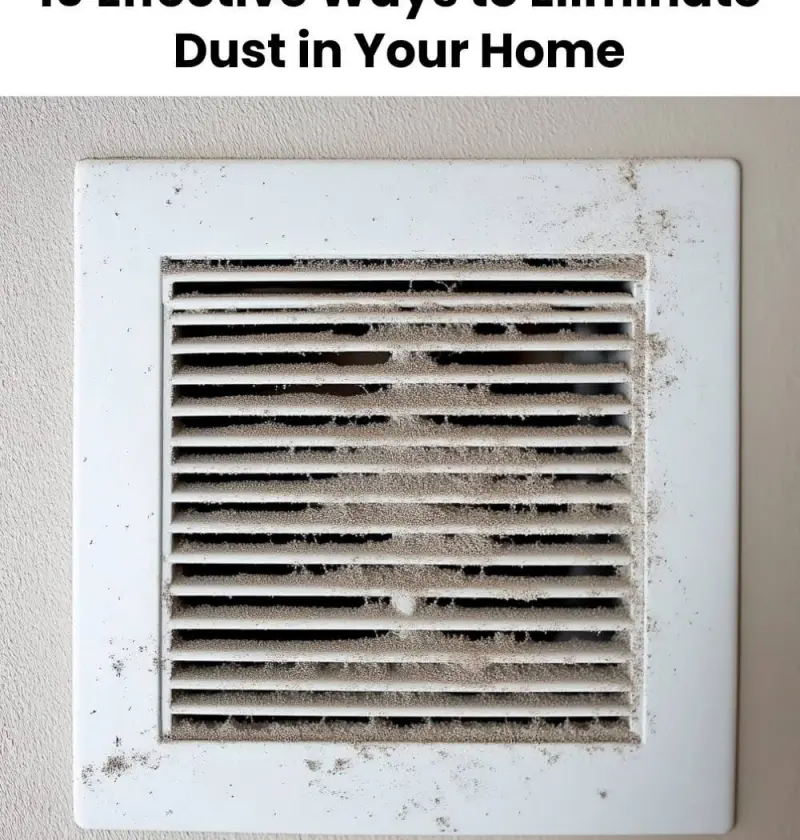Dust seems to be an unavoidable part of home life, but with the right strategies and tools, you can significantly reduce its presence. Consisting of a mix of dead skin cells, pet dander, fabric fibers, pollen, and even microscopic soil particles, dust can quickly accumulate, affecting your home’s cleanliness and air quality. Here are 10 practical and effective ways to eliminate dust in your house, helping you maintain a cleaner, healthier living space.
1. Invest in High-Quality Air Purifiers
Air purifiers with HEPA (High-Efficiency Particulate Air) filters are one of the best ways to reduce airborne dust particles. These filters are designed to capture particles as small as 0.3 microns, including dust, pollen, and pet dander. Place air purifiers in rooms where dust tends to accumulate the most, such as living rooms and bedrooms, to maintain a cleaner environment.
Tip: Make sure to clean or replace the purifier filters according to the manufacturer’s recommendations to ensure they remain effective.
2. Upgrade Your HVAC System Filters
Your home’s HVAC (Heating, Ventilation, and Air Conditioning) system can play a crucial role in dust control. Standard HVAC filters may not be effective in trapping smaller dust particles, so consider upgrading to high-efficiency filters with a MERV (Minimum Efficiency Reporting Value) rating of 8 or higher. These filters can capture finer particles and prevent dust from recirculating back into your home.
Tip: Change HVAC filters every 2-3 months, or more frequently if you have pets or live in a dusty area.
3. Use Microfiber Cloths for Dusting
Microfiber cloths are superior to traditional dusters because they have fine fibers that attract and trap dust instead of just spreading it around. Use a dry microfiber cloth for light dusting and a slightly damp one for more stubborn dust buildup. These cloths are reusable and can be washed regularly to maintain their effectiveness.
Tip: Avoid using feather dusters or regular cotton cloths, as they tend to scatter dust rather than remove it.
4. Wash Bedding and Linens Regularly
Bedding, pillows, and mattresses can harbor large amounts of dust, dead skin cells, and dust mites. To reduce dust buildup, wash sheets, pillowcases, and blankets in hot water weekly. Consider using hypoallergenic mattress and pillow covers to create an additional barrier against dust mites.
Tip: Vacuum your mattress every few months to remove dust that has settled in and around the fabric.
5. Vacuum with a HEPA-Filter Vacuum Cleaner
Not all vacuums are created equal when it comes to dust control. Choose a vacuum cleaner equipped with a HEPA filter, which can capture even the smallest dust particles. Regular vacuuming of carpets, rugs, and upholstery is crucial, as these surfaces can trap large amounts of dust. For best results, vacuum at least once a week, or more frequently in high-traffic areas.
Tip: Empty the vacuum bag or canister frequently, and clean or replace the filters to maintain strong suction and filtration.
6. Declutter and Organize Your Space
Clutter provides more surfaces for dust to settle on, making cleaning more challenging. Keep countertops, shelves, and floors as clear as possible to minimize dust accumulation. Use storage solutions like cabinets, bins, and drawers to keep items organized and reduce exposed surfaces that collect dust.
Tip: Make a habit of regularly decluttering to prevent unnecessary items from accumulating dust.
7. Clean or Replace Air Vents and Ducts
Dust can accumulate inside your home’s air ducts and vents, reducing air quality and spreading dust throughout the house. Schedule regular duct cleaning every few years to remove built-up dust and debris. Additionally, clean air vents and registers every few months to ensure optimal airflow and reduce dust circulation.
Tip: Consider adding vent filters to help trap additional dust and particles before they enter your living space.
8. Minimize Dust from Fabrics
Curtains, upholstered furniture, and carpets are major dust collectors. Regularly vacuum and steam-clean upholstery to reduce dust buildup. Choose washable curtains or switch to blinds, which are easier to wipe clean. Consider reducing the number of fabric surfaces in your home or opting for easy-to-clean alternatives.
Tip: Use a lint roller or vacuum attachment to quickly remove dust from fabric lampshades, cushions, and other soft surfaces.
9. Use Doormats and Remove Shoes Indoors
Prevent dust and dirt from entering your home in the first place by using high-quality doormats at every entrance. Encourage family members and guests to remove their shoes before entering, as shoes can track in dirt, soil, and allergens that contribute to indoor dust.
Tip: Clean doormats regularly and consider placing a secondary mat inside the doorway for added protection.
10. Incorporate Indoor Plants for Natural Dust Reduction
Certain indoor plants can act as natural air purifiers, helping to reduce dust levels and improve air quality. Plants like spider plants, peace lilies, and rubber plants are particularly effective at trapping dust particles on their leaves. However, remember that plant leaves can also accumulate dust, so wipe them down periodically to keep them dust-free.
Tip: Avoid overwatering plants, as excess moisture can contribute to mold and mildew growth, which can worsen indoor air quality.
Conclusion: Maintaining a Dust-Free Home
Eliminating dust from your home is a continuous process that requires a combination of effective cleaning techniques and preventative measures. By incorporating these 10 strategies into your regular cleaning routine, you can significantly reduce the amount of dust in your home and create a healthier living environment. With the right tools and a consistent cleaning schedule, your home can stay fresh, clean, and dust-free year-round.
